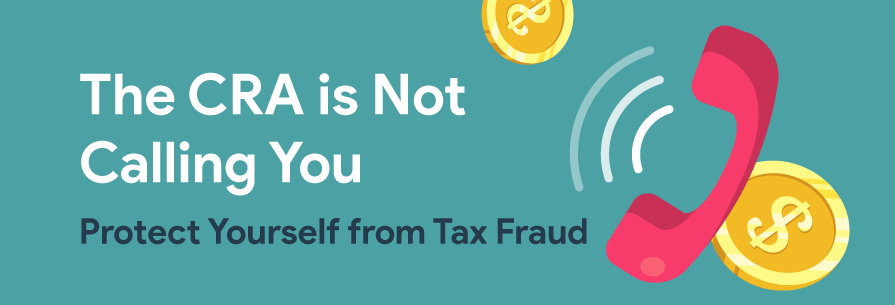3. Direct Deposit-Paycheque Phishing Attacks
A direct deposit phishing scam has affected a number of employers:
- First, an employee receives an official-looking email from what appears to be a trusted service or resource. The email asks the employee to click a link and access a website.
- On the website, the employee is prompted to confirm their data by providing their real username and password.
- Scammers then use that login information to access the employee's payroll portal and reroute their direct deposits to bank accounts owned by the scam artists.
These fraudulent emails look real, right down to the logo and signature. Many employers do not discover this phishing attack until their employees begin reporting that they haven't received their paycheques. These phishing emails are specifically targeted to employees only.
Remember: think before you click, and never give out your personal information via email.
4. General Phishing Emails
Some phishing attacks are not targeted to a specific group of people. Scammers will often send mass phishing emails that ask recipients to click on a link, download an attachment or divulge sensitive information. These emails often look legitimate and they can even mimic the CRA's email header, footer, and logo.
Watch out for unsolicited emails, texts, social media posts, or fake websites that may lure you in and prompt you to share valuable personal and financial information. Learn more about how to spot a phishing attack.
5. Online Tax Preparer Fraud
Most tax preparers provide honest services, but some disreputable individuals may target unsuspecting taxpayers, resulting in refund fraud and/or identity theft. The CRA reminds anyone filing a tax return that the preparer must sign it with his or her preparer tax identification number.
Alternatively, your tax preparer could be the victim of cybercrime themselves, potentially compromising your data. Always keep an eye on your bank account. If you receive a refund you did not request, contact the CRA immediately. If someone calls you claiming to be from a collection agency, be skeptical, and do not divulge any personal or financial information if you suspect it might be a scam. Hang up the phone and either check your CRA account online or call the CRA at 1-800-959-8281.
How to Stay Safe
- Update, patch, and tighten cybersecurity: To avoid being a victim of cybercrime, make sure that the operating system and software on all of your computing devices (including mobile) are up to date. Maintain and keep up to date your antivirus, security patches/fixes and internet security program.
- When in doubt, throw it out: Scam artists are good at what they do, and many times, the phishing emails they send look legitimate. However, just because something looks real doesn't mean it is. If you receive an email that seems suspicious, even if you know the source, play it safe and delete it, or at the very least, contact the supposed sender through a separate channel to validate the email's legitimacy.
- Think before you act: Be wary of communications that implore you to act now, especially if you are told you owe money to the CRA and it must be paid immediately. Scammers prey on our emotions, and invoking a sense of urgency is a common tactic. Keep an eye open for any urgent or threatening language.
- Use a passphrase: Short passwords are insecure and easy for someone else to figure out. Instead, use a passphrase. Passphrases are much longer, easier to remember and more complicated to figure out. For guidance on creating a passphrase, see the MyCCID page. Consider using a password manager to store your passphrases.
- Exercise caution when using public WiFi: Public WiFi networks are convenient, but not secure. Anyone can gain access to a public network to compromise your Internet traffic, monitor your activity and steal your personal information.
- File taxes from a secure website: Before you file a tax return online, ensure that the website begins with https, not http. The extra "s" at the end means that any data sent over that connection is encrypted and cannot be read by hackers. If the website you're using doesn't begin with https, then don't use it to file your tax return.
Remember, the CRA will never do the following:
- Use threatening or abusive language
- Send an email asking you to divulge personal or financial information
- Call you and ask for monetary payment right away
- Send any documents or forms unless you specifically requested them
The only exception is if you call the CRA to request a form or a link for specific information. Then, a CRA agent will forward the information you are requesting to your email during the telephone call.
Don't be a Victim
Despite best efforts, scam artists are always evolving and introducing new techniques. The only way to stay ahead of scammers is to be vigilant and skeptical. Tax fraud is prevalent at this time of year, but cybercrime happens year round. Stay alert, and follow the steps outlined by the Government of Canada to protect yourself from fraud and identity theft.
References
- National Cyber Security Alliance: https://staysafeonline.org/
- Canada Revenue Agency: http://www.cra-arc.gc.ca/scrty/frdprvntn/menu-eng.html and https://www.canada.ca/en/revenue-agency/news/newsroom/tax-tips/tax-tips-2022/not-sure-cra-calling-here-how-to-find-out.html
- Canadian Anti-Fraud Centre: http://www.antifraudcentre-centreantifraude.ca/
- CBC News: https://www.cbc.ca/news/canada/kitchener-waterloo/wrps-interac-tax-refund-cra-canada-revenue-service-1.5430927
